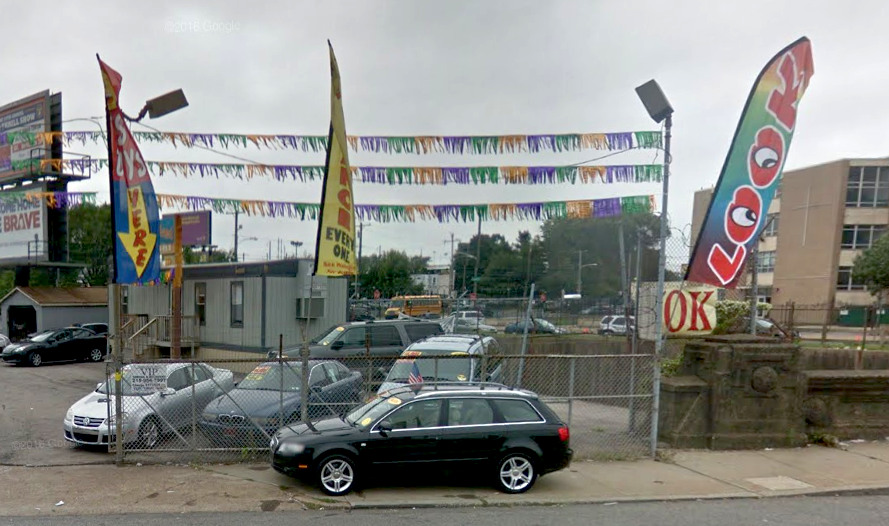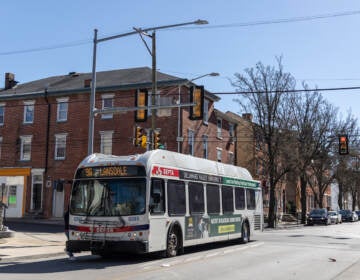Henon bill aims to rid sidewalks of inflatable tube men, portable signs

Sidewalk advertisements are everywhere, blooming from the pavement and parking lots in colorful bursts. Fluttering flags in Center City hawk cell phones, while inflatable men of disquieting size billow on the auto-centric corridors of the Northeast.
Councilman Bobby Henon isn’t a fan of any of it.
“Wacky wavy arm flailing inflatable tube men,” says Courtney Voss, Henon’s chief of staff. “They are all over the place including in our district, particularly along our business corridors and in our industrially zoned areas. The Councilman really, really dislikes them.”
Last week Henon introduced a bill, months in the making, that he claims will rationalize the regulation of these and other accessory signs in the city.
During his floor speech about the legislation last week, Henon denounced portable signage as a “blight” on neighborhood commercial corridors. But he did not mention that the bill is far more than an attempt to bring inflatable dancing advertisements to heel.
Henon’s office considers this legislation to also be beginning of an effort to make the law around all types of signage easier to understand and comply with.
The bill adds definitions for “Portable Signs” to the Philadelphia code and demands that they must be secured and out of the public right-of-way. (The most common form of sidewalk sign, the A-frame sandwich board, is not included.) The latter provision, at least, is already law as the sidewalk and street are public property and private businesses aren’t allowed to sprawl on to the public right of way without permission.
Other changes include tweaks to the maximum height and area of signs in auto-centric zoning districts, a simplification of the confusing tangle of categories regarding digital signage, and a new measurement for governing the restrictions on signs in store windows. These last are currently regulated based on the total area of signs per floor, which is widely considered a confusing metric. Under Henon’s bill signs would instead only be allowed to cover 20 percent of a window.
The Department of Licenses and Inspections (L&I), which is tasked with enforcing these regulations, is largely supportive and worked with Henon’s office on the legislation.
Neighborhood commercial managers also expressed support for the legislation. Director of the Tacony Community Development Corporation, Alex Balloon, said that he shares Henon’s enmity towards portable signs. But he seems more appreciative of other aspects of the bill.
The simplification of the window sign rules would be a blessing, according to Balloon, as would clear definitions of digital signs. In auto-friendly districts, designated in the zoning code as CA-1 and CA-2, the bill seeks to ease confusion over whether allowable signage should be measured based on the flat roofs of these one-story buildings or from their parapets that face the street. (Rules about second story signage would be eliminated because buildings in these zones very rarely have more than one story.)
Balloon sees these changes as bringing a semblance of rationality to a sign permitting and regulation process that he describes as opaque, expensive, and difficult to navigate.
“There’s a vast number of signs in Philadelphia’s small business owners that are unpermitted,” says Balloon. “We are quickly becoming a city of unpermitted signage because the process is so expensive and complex. It’s a disincentive to doing the right thing.”
Henon’s office has collected data on the number of sign permits extant in the city, finding the largest concentrations in Center City and the Far Northeast. On East Passyunk there are only eight sign permits, with the same improbably low number found at the neighborhood corridor of Kensington and Allegheny. The hub around Bustleton and Roosevelt Boulevard only sports six permits.
Henon’s office says they believe business owners would comply if the rules were simpler. He believes the fault lies with the city for failing to create simple and affordable regulations that can be easily complied with.
“The fact that there appears to be so few permits for accessory signage tells us that our current framework, costs, and processes aren’t working for business owners,” says Voss. “This legislation is intended to be the first of what will be several proposals and efforts to change how we approach the regulation of accessory signage.”
L&I spokeswoman Karen Guss says that the bill will help make signage regulations “reality based.” The department really wants business owners to get permits, but it agrees that the process currently isn’t very clear.
For its part, L&I says that it doesn’t have the staff to rigorously enforce this type of regulation. While they do periodic sweeps of corridors, such efforts certainly aren’t as prominent a part of the institution’s mission as fire code or other safety-related violations.
“With our safety focus, sign enforcement is not on the top of anyone’s list,” says Guss. “We do care about quality of life and aesthetics. That’s one reason we wanted this bill: We wanted to make it clearer what you need to do to get your signs permitted.”
It is unclear, however, whether Henon’s crusade against portable signs can be effectively carried out by L&I.
Although Guss wouldn’t comment on the question, it is difficult to see how further regulations would combat a form of signage that, by its very nature, can be quickly carted away when the inspector is coming. After all, these moveable signs are already illegal when placed on the public sidewalk and yet they are still a common occurrence on the right-of-way in business corridors everywhere.
The portable signs were a sticking point between the department and Henon’s office. Guss did say that while L&I worked closely with him on most aspects of the bill, they were not involved with defining and regulating portable signs.
The department argues that the language about portable signs is unnecessary because there is already law against such encroachments. The bill also uses the zoning code to tame them, which the department says is meant to regulate private land (not the public right-of-way).
“We worked closely with them to the bill, except for the portable sign piece,” says Guss. “We really don’t like portable signs, but this stuff is confusing enough and zoning isn’t the right way to address it.”
There has already been some confusion over the bill, which sent a wave of panicked emails rippling through the advocacy groups that fight to keep advertisements from bombarding Philadelphians.
The bill’s introduction surprised Mary Tracy of Scenic Philadelphia, who upon first reading feared that the legislation eased many of the regulations governing the placement of digital signage near residential communities. Although that isn’t the bill’s intent, it took the advocacy group days to parse out the details because the language is opaque and her group had not been apprised of its crafting or content by Henon’s office.
“It’s so confusing the way it was written,” says Tracey. “It’s taken many hours to figure out that [regulations on signage near residential communities aren’t being erased]. But it sounds like the intent is just to improve the law.”
The bill is scheduled to be considered by the Rules Committee on June 13, the final such hearing before the summer recess.
*Note: Mary Tracy is a member of PlanPhilly’s Community Advisory Board.
WHYY is your source for fact-based, in-depth journalism and information. As a nonprofit organization, we rely on financial support from readers like you. Please give today.







